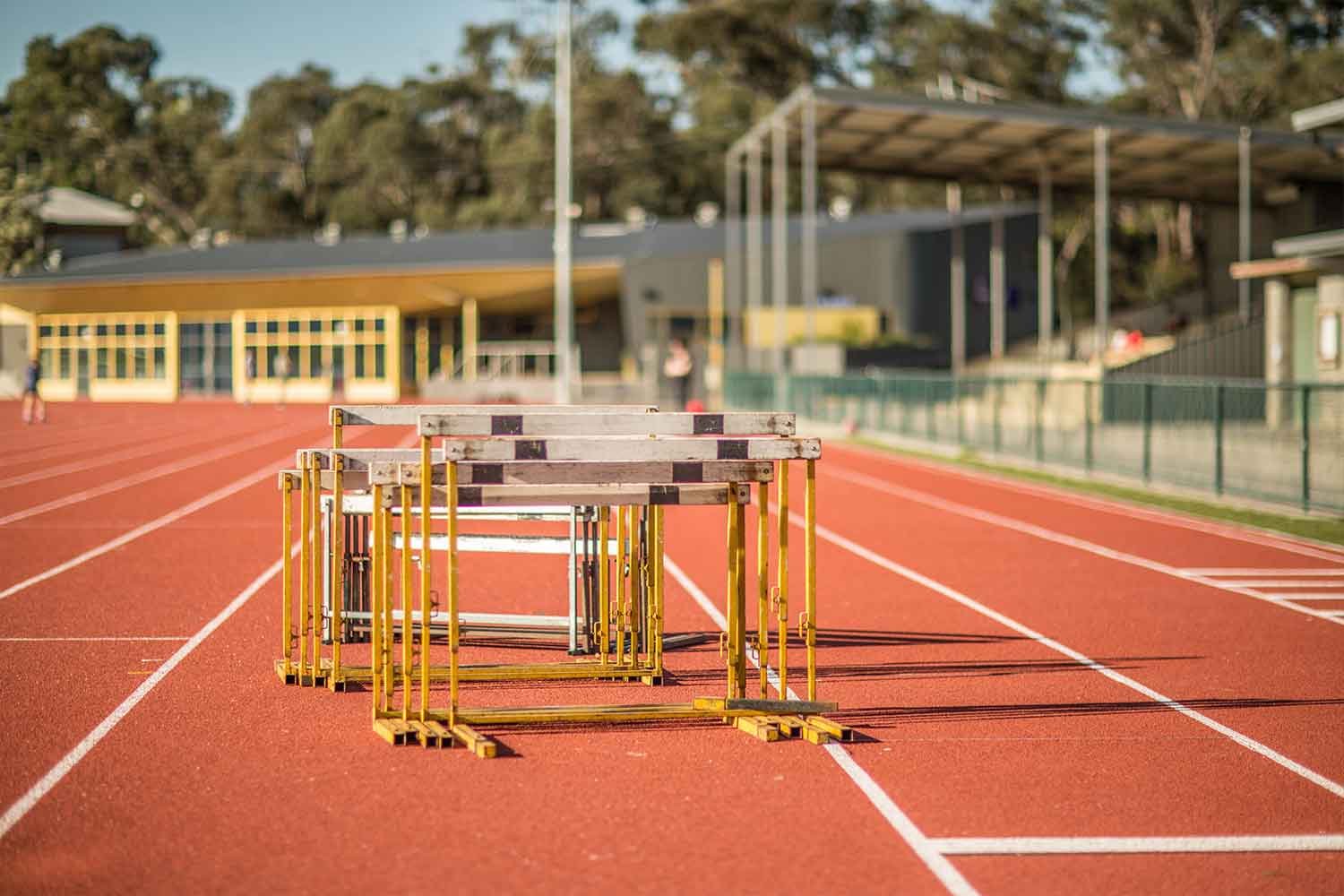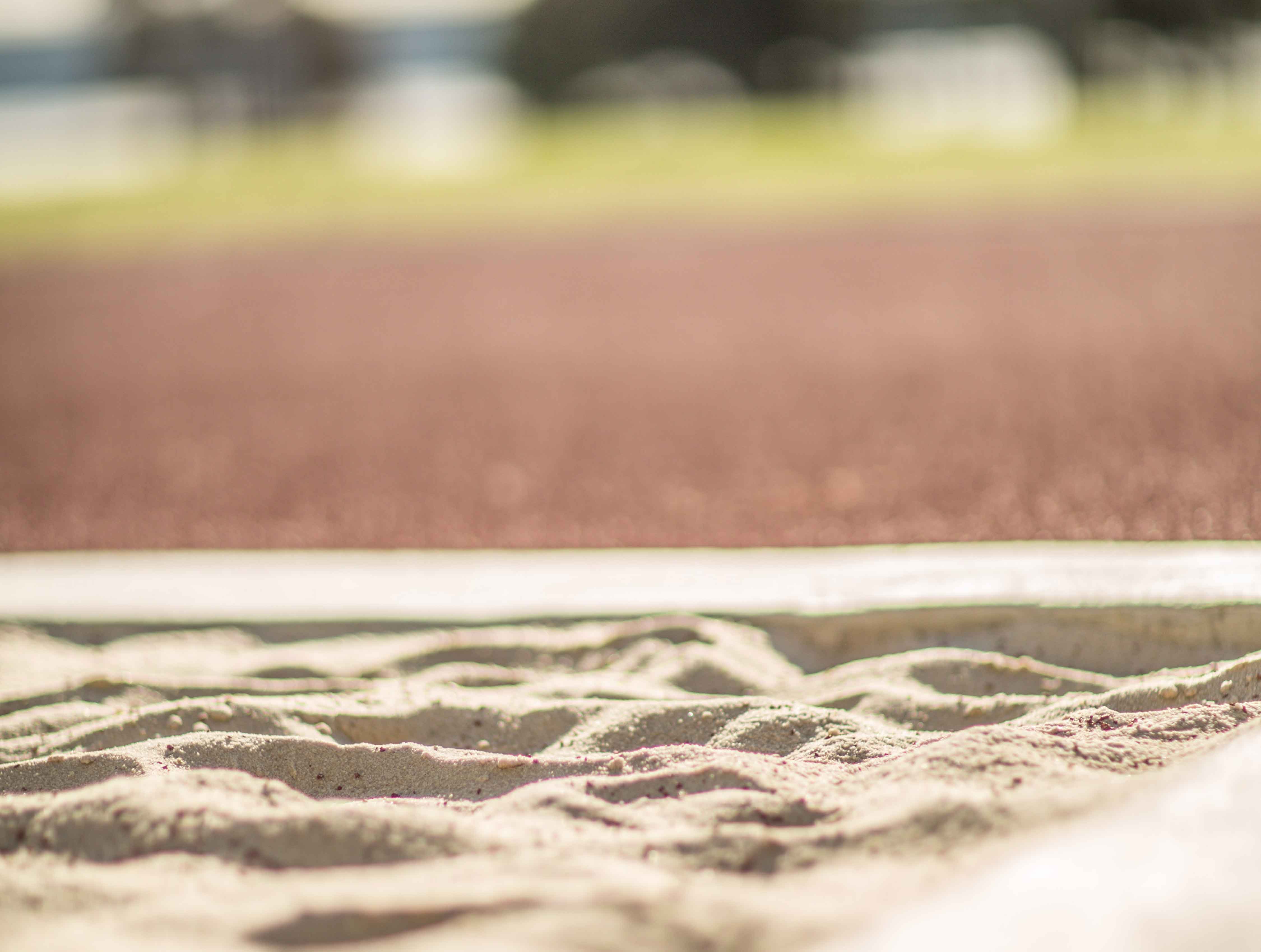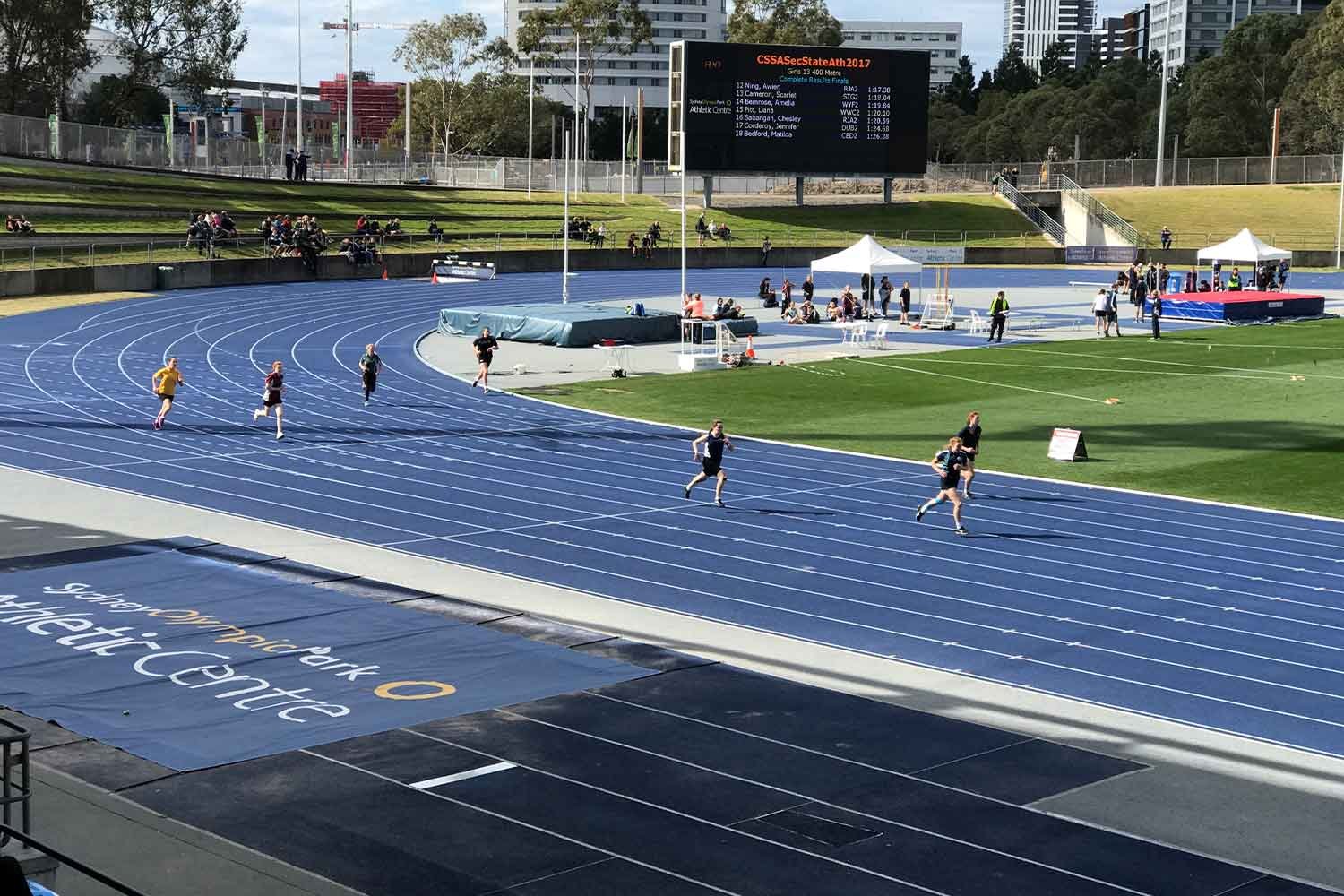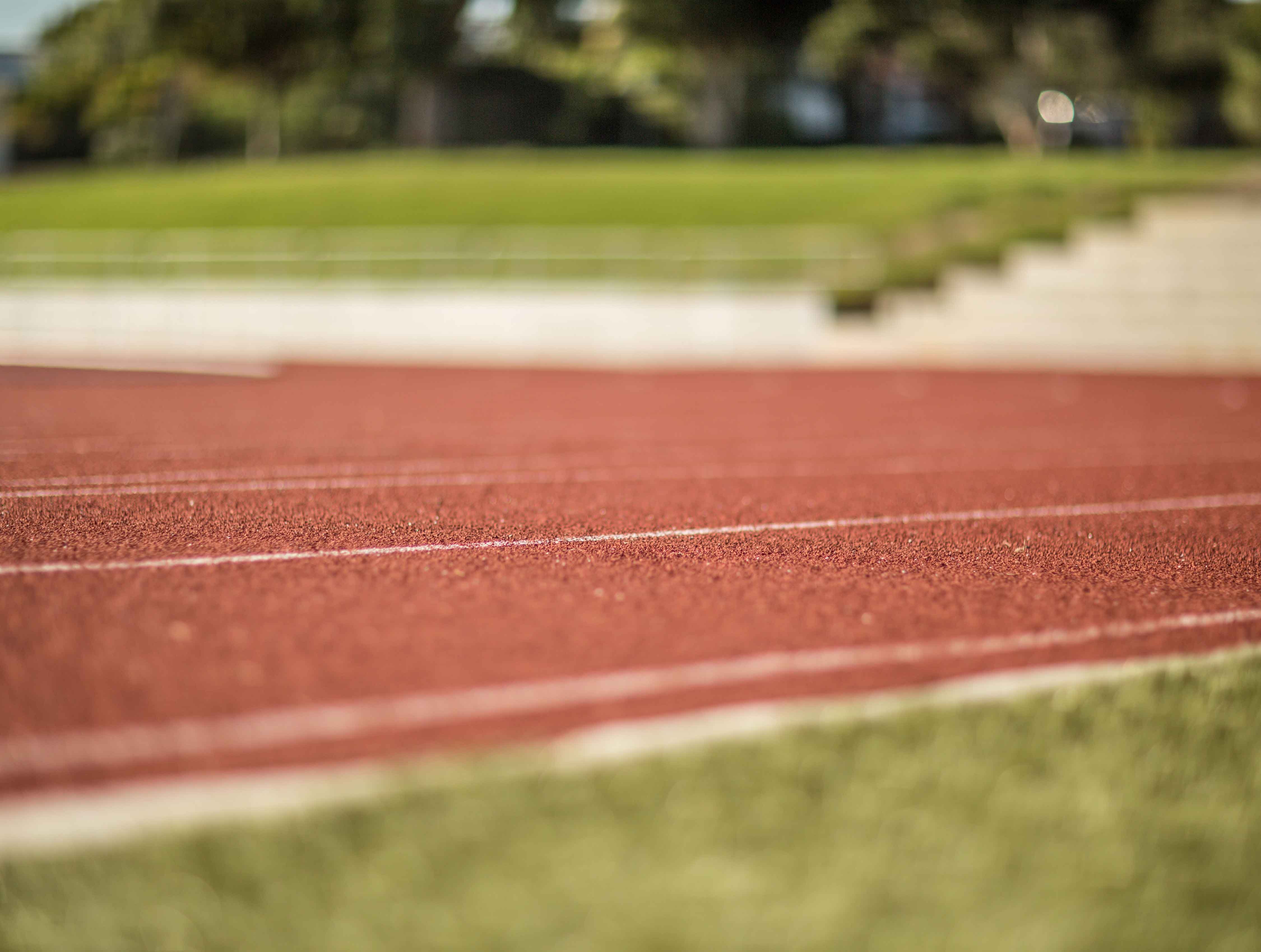

Engineering and track performance go hand in hand. The quality of your surface determines foot restitution and the opportunities for performance training. The surface also plays a role in the level of training and competition, from community facilities through to elite venues. Whether you’re watching from the grandstand or grass mound, or you’re tuning in from home anywhere in Australia, field surface quality is a noticeable feature of an athletics track.
World Athletics categorises athletic track surface options as either permeable or non-permeable.
Within these categories, the systems fall into three general areas, which include:
Natural turf and unbound granular surfaces were commonly used up until the 1960s, when the rubberised systems entered the market. While both are compliant with World Athletics requirements, the increased maintenance and non-uniform performance has made them less favourable for new facilities, which are adopting rubber-type surfacing.
It’s imperative that you choose the correct surface that meets the needs of your facility. For example, an elite venue will require a rubber surface, while a primary school running track may be better with a synthetic grass system.
From planning to design, construction to maintenance, sports surfaces are at the backbone of athlete.
Our surface knowledge covers a range of sports and their associated Fields of Play, from local- and regional-level facilities, to elite national and international stadiums.

Here at SPORTENG, we provide the kind of expert understanding that can help determine which athletics track surface is best suited for your facility, based on the intended level of competition and World Athletics requirements.
From community facilities through to national and Olympic venues, our team is best placed to help ensure the correct surface for your usage requirements.
An unbound granular profile is composed of layers with progressive grading from a coarse base layer to finer particle sizes at the surface. The particle shape of the granular material is angular to assist with stability. The performance of the surface is dependent on the ‘tightness’ of the unbounded material at the surface and the moisture content.
A natural turf surface is generally maintained at low cutting height, such as 1.5–2cm for competition use, over a well-draining growing medium. Natural turf is a compliant surface, but there can be durability issues due to the high level of use. The increased maintenance regime makes natural turf best suited for limited use.
Sand filled artificial grass (SFAG) systems are commonly used for primary school running tracks and are generally not suitable for senior athletic use. This surface isn’t approved by World Athletics.
Resin-bound rubber coated by a spray applied polyurethane paint creates a red texturised surface. This is the cheapest and least durable option on the market and commonly installed in primary schools.
This sandwich system contains a resin-bound rubber, coated with a performance layer of cast elastomer polyurethane. The performance layer replicates that of a full PUR system, but at a reduced cost. This type of surface is commonly used for community facilities.
This sandwich system contains prefabricated sheets that are overlaid with a performance layer of cast elastomer polyurethane. When this surface is installed in elite facilities, there tends to be a higher cost.
A full polyurethane system features a layer of broadcasted rubber crumb applied to the uncured surface. This top range product is high wearing and typically used for state athletic facilities.
This factory produced product means the performance properties are very uniform. It requires underlying pavement tolerances to be perfect. The prefabricated sheets are durable and are commonly used for state athletic facilities.

When you’re considering a surface for your facility, ongoing maintenance and its whole-of-life cycle should be a priority.
When a surface is properly maintained and correctly used, your facility will have an optimal lifespan.
The primary requirement to effectively maintain an athletics track is to remove debris and silt from the surface. This helps prevent it from impregnating the void spaces in the product and/or algae growth.
The life cycle of most athletics track surfaces is as follows:
1. Initial install
2. Repair to high-wear areas
3. Resurface
4. Full system replacement
Unfortunately, at the end of the athletics track's surface life, there is no standardised process to recycle the old system, and it ends up in landfill. So it is important to select the appropriate system to cater for the level of use and undertake the required level of maintenance to achieve the maximum life cycle.